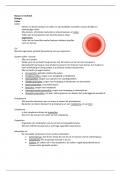Cathain et al., 2019
Abstract
Based on a consensus exercise informed by reviews and qualitative interviews, we present key
principles and actions for consideration when developing interventions to improve health. These
include seeing intervention development as a dynamic iterative process, involving stakeholders,
reviewing published research evidence, drawing on existing theories, articulating program theory,
undertaking primary data collection, understanding context, paying attention to future
implementation in the real world and designing and refining an intervention using iterative cycles of
development with stakeholder input throughout
Introduction
There is increasing demand for new interventions as policymakers and clinicians grapple with
complex challenges, such as integration of health and social care, risk associated with lifestyle
behaviors, multimorbidity and the use of e-health technology. We present this guidance as an
accessible communication article on how to do intervention development, which is aimed at readers
who are developers, including those new to the endeavor.
Key principles of intervention development
Key principles of intervention development are that it is dynamic, iterative, creative, open to change
and forward looking to future evaluation and implementation. These cycles will involve using
quantitative and qualitative research methods to measure processes and intermediate outcomes, and
assess the acceptability, feasibility, desirability and potential unintended harms of the intervention.
A logic model is a diagram of how an intervention is proposed to work, showing mechanisms by
which an intervention influences the proposed outcomes. The short- and long-term effects of
successful intervention development were informed by the qualitative interviews with developers
and wider stakeholder.
Key actions for developers to consider are summarized in table 1 (see article). These actions are
addressed in a dynamic way. Framework of actions for intervention development:
- Plan the development process
- Involve stakeholders, including those who will deliver, use and benefit from the intervention
- Bring together a team and establish decision-making processes
- Review published research evidence
- Draw on existing theories
- Articulate program theory
- Undertake primary data collection
- Understand context
- Pay attention to future implementation of the interventions in the real world
- Design and refine the intervention
- End the development phase
,Figure 1: Logic model for intervention development
Plan the development process
Understand the problem
Understanding the problem, priorities for addressing it and the aspects that are amenable to change
is part of the development process, and different solutions may emerge as understanding increases.
In addition, developers may find that it is not necessary to develop a new intervention because
effective or cost-effective ones already exist. It may not be worth developing a new intervention
because the potential cost is likely to outweigh the potential benefits or its limited reach could
increase health inequalities, or the current context may not be conductive to using it.
Identify resources – time and funding
Once a decision has been made that a new intervention is necessary, and has the potential to be
worthwhile, developers can consider the resources available to them. Spending too little time
developing an intervention may result in a flawed intervention that is later found not to be effective
or cost-effective or is not implemented in practice, resulting in research waste. Spending too much
time on development could also waste resources by leaving developers with an outdated intervention
that is no longer acceptable. It is likely that a highly complex problem with a history of failed
interventions will warrant more time for careful development.
Seeking funding
Decide which approach to intervention development to take
Some published approaches and approaches that developers have used in practice are listed in table
2 (see article): different approaches to intervention development. No research has shown that one of
these approaches is better than another or that their use always leads to the development of
successful interventions. Although developers may follow a published approach closely, experts
recommend that developers apply these approaches flexibly to fit their specific context. Many of
these approaches share the same actions and simply place more emphasis on one or a subset of
actions. Researchers sometimes combine the use of different approaches in practice to gain the
,strengths of two approaches, as in the ‘Combination’ category of table 2.
Involve stakeholders throughout the development process
The rationale for involving relevant stakeholders from the start, and indeed working closely with
them throughout, is that they can help to identify priorities, understand the problem and help find
solutions that may make a difference to future implementation in the real world. Members of the
public, patients and service users are key stakeholders, and experts recommend planning to integrate
their involvement into the intervention development process from the start.
Bringing together a team and establish decision-making processes
Experts recommend including: experts in the problem to be addressed by the intervention;
individuals with a strong track record in developing complex interventions; a behavior change
scientist when the intervention aims to change behavior and people who are skilled at maximizing
engagement of stakeholders. There is no consensus on the size of team to have, but experts think it is
important to agree a process for making decisions. In particular, experts recommend that team
members understand their roles, rights and responsibilities; document the reasons for decisions
made and are prepared to test different options where there are team disagreements.
Review published research evidence
Reviewing published research evidence before starting to develop an intervention can help to define
the health problem an intervention can help to define the health problem and its determinants,
understand the context in which the problem exists, clarify who the intervention should be aimed at,
identify whether effective or cost-effective interventions already exist for the target
population/setting/problem, identify facilitators and barriers to delivering interventions in this
context and identify key uncertainties that need to be addressed using primary data collection.
Undertaking systematic reviews is not always necessary because there may be recent relevant
reviews available, nor is it always possible in the context of tight resources available to the
development team. However, undertaking some review is important for ensuring that there are no
existing interventions that would make the one under development redundant.
Draw on existing theories
The rationale for drawing on existing theories is that they can help to identify what is important,
relevant and feasible to inform the intended goals of the intervention and inform the content and
delivery of any intervention. It may be relevant to draw on more than one existing theory. Experts
recommend considering which theories are relevant at the start of the development process.
However, the use of theories may need to be kept under scrutiny since in practice some developers
have found that their selected theory proved difficult to apply during the development process.
Articulate program theory
A program theory describes how a specific intervention is expected to lead to its effects and under
what conditions. It shows causal pathways between the content of the intervention, intermediate
outcomes and long-term goals and how these interact with contextual factors. Articulating program
theory at the start of the development process can help to communicate to funding agencies and
stakeholders how the intervention will work. Logic models can be drawn to communicate different
parts of the program theory such as the causes of a problem, or the mechanisms by which an
intervention will achieve outcomes, to both team members and external stakeholders (Figure 1).
Undertake primary data collection
, Primary data collection, usually involving mixed methods, can be used for a range of purposed
throughout the intervention development process. Reviewing the evidence base may identify key
uncertainties that primary data collection can then address. Surveys, discrete choice experiments or
qualitative interviews can be used to assess the acceptability, values and priorities of those delivering
and receiving the intervention.
Understand the context
Recent guidance on context in population health intervention research identifies a breadth of
features including those relating to population and individuals; physical location or geographical
setting; social, economic, cultural and political influences and factors affecting implementation, for
example, organization, funding and policy. The rationale for understanding this context, and
developing interventions which can operate within it, is to avoid developing interventions that fail
during later evaluation because too few people deliver or use them. Different approaches can be
taken to understand context, including reviews of evidence, stakeholder engagement and primary
data collection.
Pay attention to future implementation of the intervention in the real world
The end goal of developers or those who fund development is real-world implementation rather than
simply the development of an intervention that is shown to be effective or cost-effective in a future
evaluation. To achieve this goal, developers may pay attention early on in the development process to
factors that might affect use of the intervention, ‘scale up’ of the intervention for use nationally or
internationally, and sustainability.
Design and refine the intervention
Design is a specific creative part of the development process where ideas are generated, and
decisions are made about the intervention components and how it will be delivered, by whom and
where. Once an early version or prototype of the intervention is available, it can be refined using a
series of rapid iterations where each iteration includes an assessment of how acceptable, feasible and
engaging the intervention is.
End the development phase
In many ways, development never stops because developers will continue to learn about the
intervention, and refine it, during the later pilot/feasibility, evaluation and implementation phases.
The decision to end the development phase may be partly informed by practicalities, such as the
amount of time and money available, and partly by the concept of data saturation (used in qualitative
research). It is helpful to publish the intervention development process because it allows others to
make links in the future between intervention development processes and the subsequent success of
interventions and learn about intervention development endeavors.
- Partnership
- Target population centered
- Theory and evidence based
- Implementation based
- Efficiency based
- Stepped or phased
- Intervention specific
- Combination
- Pragmatic










